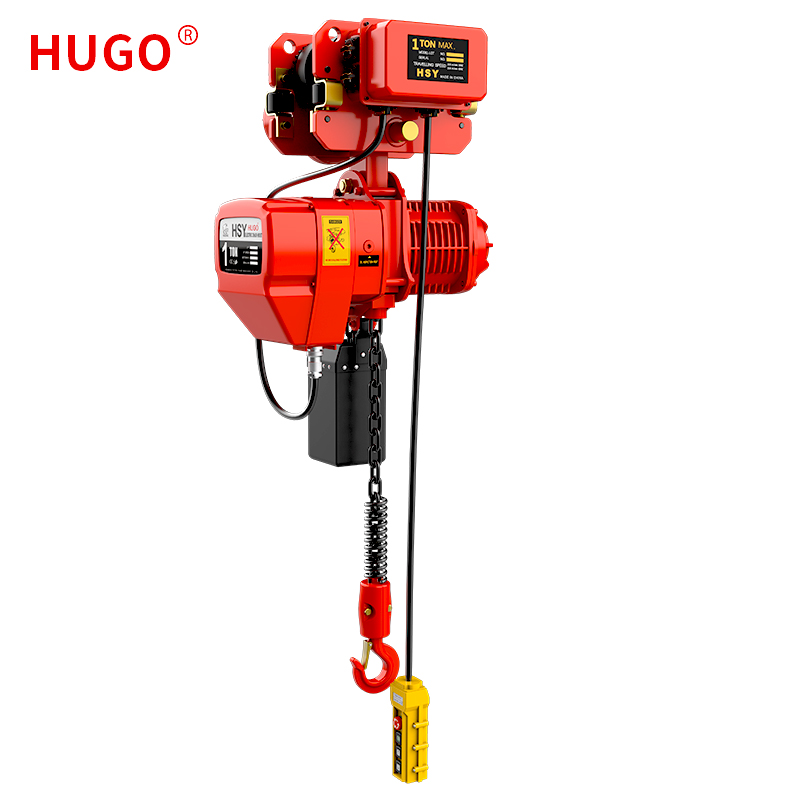
- English
- Español
- Português
- русский
- Français
- 日本語
- Deutsch
- tiếng Việt
- Italiano
- Nederlands
- ภาษาไทย
- Polski
- 한국어
- Svenska
- magyar
- Malay
- বাংলা ভাষার
- Dansk
- Suomi
- हिन्दी
- Pilipino
- Türkçe
- Gaeilge
- العربية
- Indonesia
- Norsk
- تمل
- český
- ελληνικά
- український
- Javanese
- فارسی
- தமிழ்
- తెలుగు
- नेपाली
- Burmese
- български
- ລາວ
- Latine
- Қазақша
- Euskal
- Azərbaycan
- Slovenský jazyk
- Македонски
- Lietuvos
- Eesti Keel
- Română
- Slovenski
- मराठी
- Srpski језик
Eight Common Fault Causes and Solutions of Electric Hoists
2022-08-10
In the process of using the electric hoist, it is inevitable that there will be failures. In order to improve the safe operation of the electric hoist, timely and accurate handling of various failures in operation has become an important part of construction and production. Combined with the experience of installation and maintenance, the causes of some common faults of electric hoists are analyzed in detail.

The main reason is that the electric hoist cannot work because the rated working voltage is not connected. Generally, there are three situations:
(1). No electricity. Whether the power supply system sends power to the electric hoist power supply, it is generally tested with a test pen.
(2). Lack of phase. The electrical appliances of the main and control circuits of the hoist are damaged, the circuit is disconnected or the contact is poor, which will also cause the phase loss of the hoist motor to fail to work normally. In this case, the main and control circuits need to be repaired. The power supply of the three-phase motor is out of phase and the motor is burnt, or the hoist motor suddenly runs on electricity, causing harm. The hoist motor must be disconnected from the power line, only the main and control circuits are powered, and then the start and stop switches are jogged. , Check and analyze the working conditions of the control electrical appliances and circuits, repair or replace the faulty electrical appliances or circuits, and re-commission the drive only when it is confirmed that the main and control circuits are fault-free.
(3). The voltage is too low. The voltage at the motor terminal of the hoist is more than 10% lower than the rated voltage, and the starting torque of the motor is too small, so that the hoist cannot lift the goods and cannot work. When checking, use a multimeter or a voltmeter to measure the voltage at the input terminal of the motor.
2. Abnormal noise occurs when the electric hoist is running
Many faults of the electric hoist, such as the faults of control appliances, motors or reducers, are often accompanied by abnormal noises. The location, level and tone of these noises vary with the cause of the fault. When overhauling, listen and see more. You can use or according to the characteristics of the fault sound to determine the position of the sound, and find and repair the fault.
(1). Abnormal noise occurs in the control loop, and a "hum" noise is emitted. Generally, the contactor is faulty (such as poor contact of the AC contactor, inconsistent voltage levels, stuck magnetic core, etc.), deal with the faulty contactor It must be replaced if it cannot be repaired. After treatment, the noise will be eliminated by itself.
(2). If the motor makes abnormal noise, it should be stopped immediately to check whether the motor is running in a single phase, or if the bearing is damaged, the shaft center of the coupling is not correct, and the "sweeping" and other faults will cause the motor to have abnormal noise. The pitch and tone are different. During single-phase operation, the entire motor emits a regular "hum" sound that fluctuates stronger and then weaker; and when the bearing is damaged, it will be near the bearing, (Electrical Technology Home www.dgjs123.com) accompanied by a sound. When the shaft of the coupling is out of alignment, or the motor is slightly swept, the whole motor emits a very high "hum" sound, which is accompanied by a sharp and harsh sound from time to time. In a word, according to the difference of noise, find out the fault, carry out item-by-item maintenance, and restore the normal performance of the motor. When the motor fault is not dealt with, it is forbidden to use the hoist.
(3). Abnormal noise is emitted from the reducer, and the reducer is faulty (such as lack of lubricating oil in the reducer or bearing, gear wear or damage, bearing damage, etc.), at this time, the machine should be stopped for inspection. Whether lubricating oil is added before use, and whether the lubricating oil is replaced regularly during use, if not lubricated as required, the reducer will not only produce excessive "humming" sound, but also excessive wear or damage to gears and bearings.
3. When braking, the stopping sliding distance exceeds the specified requirements
When the electric hoist is used for a long time, the brake ring wears too much, which reduces the pressure of the brake spring and reduces the braking force. The solution is to adjust the brake bolt or replace the brake ring.
4. The heavy object rises to mid-air and cannot be restarted after stopping.
First, check whether the system voltage is too low or whether the fluctuation is too large. If this is the case, only restart after the voltage returns to normal; on the other hand, pay attention to the lack of phase during the operation of the three-phase motor, and it cannot be started after stopping. At this time, it is necessary to check Number of power phases.
5. can not stop or still do not stop to the limit position
This kind of situation is generally the contact of the contactor is welded. When the stop switch is pressed, the contact of the contactor cannot be disconnected, the motor is powered on as usual, and the hoist does not stop; when it reaches the limit position, if the limiter fails, the hoist does not parking. In this case, immediately cut off the power to make the hoist stop forcibly. After parking, repair the contactor or limiter. If the damage is serious and irreparable, the miniature electric hoist must be replaced.
6. The motor cannot be started without fault in the circuit
During construction in winter, especially after snow, the motor still cannot be started without any fault in the circuit. The reason is that the brake ring freezes to death. The solution is to open the motor cover and pry the motor with a crowbar so that it can rotate freely.
7.the wire rope can only go up and down.
The reason is that the travel limiter is damaged, and the chain electric hoist of the travel limiter needs to be replaced.
Through the analysis of common faults and solutions of electric hoists, hoist maintenance personnel know where to start inspections when dealing with faults, and improve maintenance efficiency. In addition, it also provides operators with methods to deal with problems on site
8. the motor temperature rise is too high
First of all, you should check whether the hoist is overloaded. Overloading will cause the motor to heat up. Long-term overloading will burn the motor; if the motor is not overloaded, but still heats up, you should check whether the motor bearing is damaged; you should also check whether the motor works according to the prescribed working system, which also causes the motor to heat up. One of the reasons is that it should work in strict accordance with the motor work system when using it. When the motor is running, the brake gap is too small and not completely disengaged, resulting in a large friction force. The friction and heat are also equivalent to increasing the additional load, which reduces the speed of the motor, and the current increases and heats up. At this time, stop working and restart. Adjust the brake clearance.


